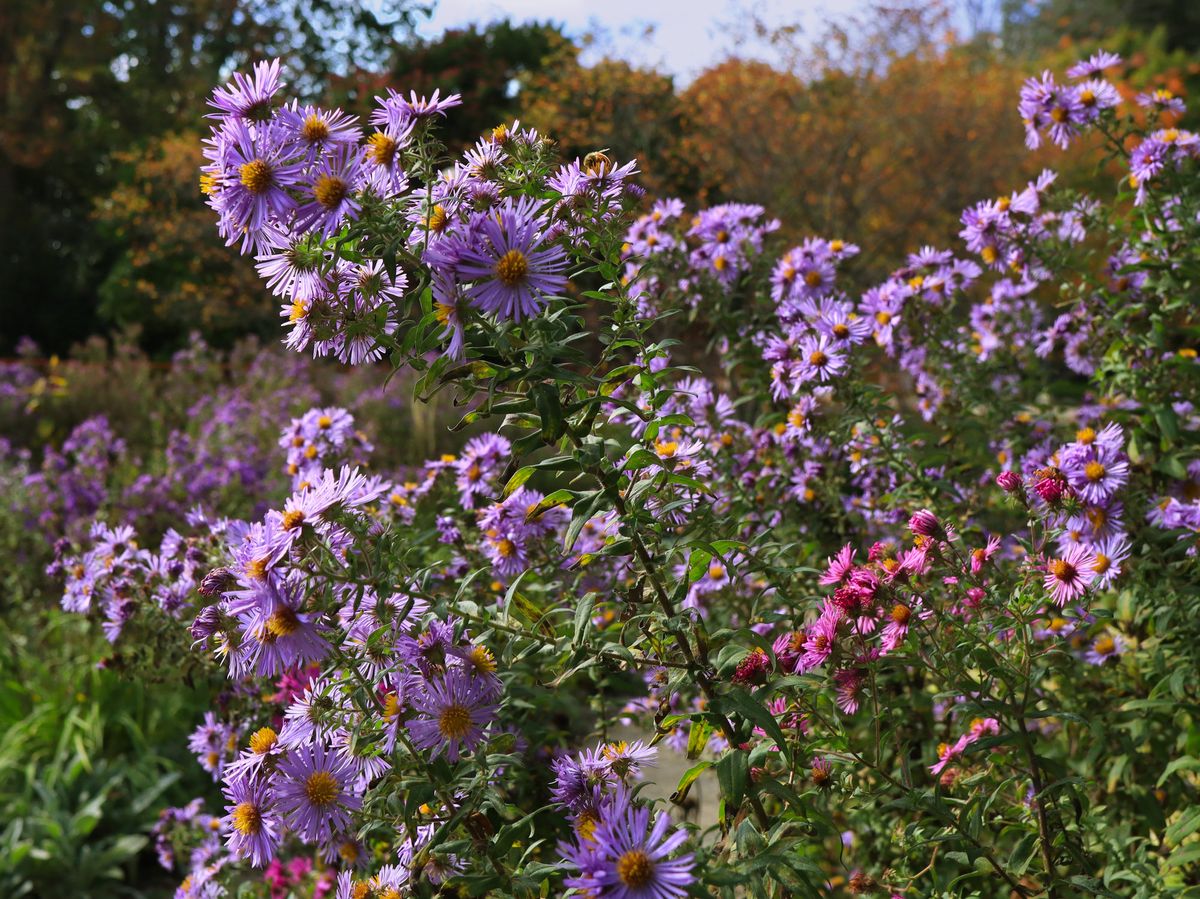Park Nature Walk in Autumn
Native plants at Waterloo Park begin to wither for the fall. The last of their energy spent to provide pollen and nectar to continue life in the spring.

It's been a while since I woke up before noon and today I finally managed to get up at 11:59am. The sky was partly cloudy and the temperature outside was anyone's guess. It looked like it would be a sweater half-off & half-on kind of day. As I locked the front door I took a sniff, half expecting the familiar scent of manure from the nearby farms. I'm not sure why I expected it, I never really bothered to think too hard about when farmers decided to over-fertilize their crop. Instead, I smelled nothing. Not even the cold autumn air. Judging from that I decided that today was not a special day.
The weather was as unpredictable as I expected. When the sun hid behind the clouds, my longsleeve overshirt I ended up in my tote. A sip of iced tea or a gust of wind in the shade had me putting it back on. A wise fashion-choice, I thought to my well-assimilated-Canadian-immigrant-self. My weather vocabularly was no longer only hot, raining and not raining. It now included "The Canadian Fall".
I also thanked my jeans for covering my legs. When I arrived at Waterloo Park, I realized my preferred photo subjects were plants buzzing with insects and I did not want another infected bug bite. I really didn't consider it when I decided to be outdoorsy today, I was only thinking about which plants were blooming in the fall and not which bugs were going to bathe in their pollen.

Upon closer inspection, I realized they were bees! There were so many flowers to get to that they were too busy to pay attention to me. I was safe to get close ups of the plants.
The most common blooming flower at the park were New England Asters (Symphyotrichum novae-angliae). They grow several feet tall and their purple flowers are a critical source of nectar for pollinators and Monarchs preparing to migrate to Mexico. These plants are native in Central and Eastern North America.

Another common plant was the Pokeweed (Phytolacca americana). I frequently see identification requests for the berries of this plant in online plant forums. There is just something so alien-looking about their fruit. They seem similar to tropical Araceae or Medinilla with their hanging inflorescence. But Pokeweed is actually native. Many gardeners refuse to keep this plant on their property however. They are often labelled "invasive" for their aggressive weed-like growth, deep tap roots and incredibly toxic ...entirety. The sap can cause dermatitis to people with sensitive skin and none of the plant should be eaten. Though, some cultures do thoroughly cook the young leaves of this plant before eating them.
There were sparse dots of a few more non-native plants blooming in the area, but they were not as buzzing with excitement as these two. I noticed that many of the flowers were at the end of their blooming state. Its time for them to use all of their energy to form berries for other creatures to consume and spread the seeds. It is somewhat bittersweet to see these plants begin to wither and die. Many of their leaves were turning brown and their flowers were a mushy black mess.
I realize however, that just because the plants are starting to look wilty and ugly to some of us it doesn't mean that its over. Some may be bunking down to sleep for the winter, and others are giving their last amazing push to reseed and sprout in the spring. All while providing food for migrating and hibernating creatures. Plants will always find a way to thrive, and that is why I enjoy them so much.
On my way home I decided to walk the long way back. Without my phone or any music, I tried to take in all the sights and sounds. I sniffed to smell the air. A bee hit my nose. While to me it wasn't a very special day, it was a very busy one for nature.
